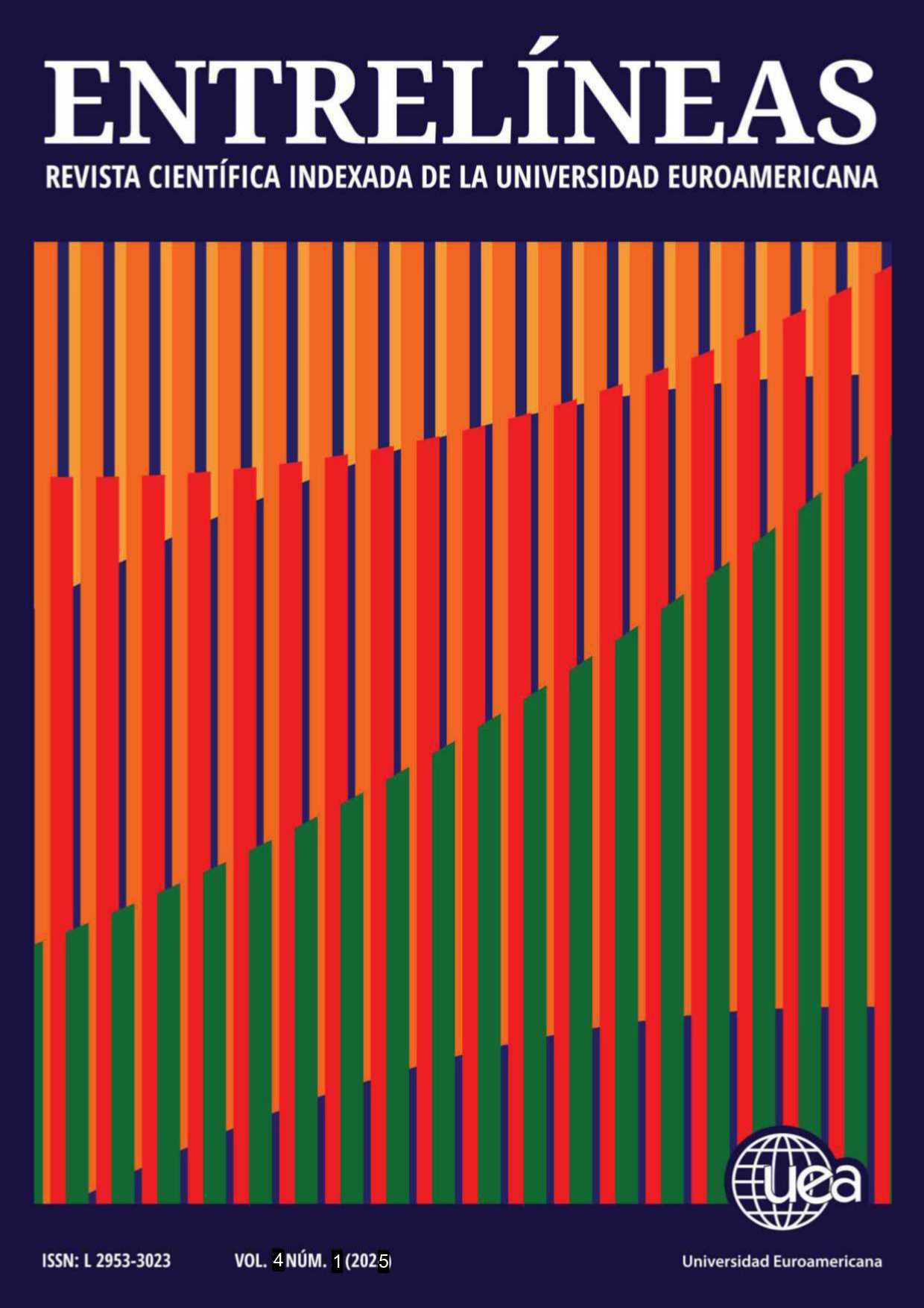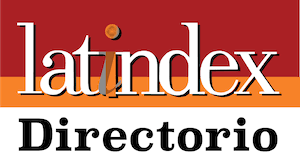The strength of the constitution in a state
DOI:
https://doi.org/10.56368/Entrelineas413Keywords:
Constitution, constitutional control, institutional stability, rule of law, political system, constitutional supremacyAbstract
This research analyzes how the Constitution in a State becomes an instrument of regulation and limitation of power, evaluating its effectiveness in institutional stability and its influence on the consolidation of the rule of law. The study is qualitative in nature, adopting the hermeneutic method for the interpretation and critical analysis of normative documents, legal doctrines, and studies on constitutionalism. It is classified as documentary and descriptive research, based on the review of secondary sources. One of the fundamental principles is constitutional supremacy, the sovereign norm that governs the legal system and limits the exercise of state power. Comparative analysis shows that countries with constitutional protection mechanisms achieve greater applicability of constitutional norms. The discussion confirms that the effectiveness of the Constitution depends on a combination of legal, political, and social elements, where countries with independent judicial systems and constitutional courts with transparent powers better apply the Constitution. From this, it is concluded that its effectiveness depends on a balance between institutional, legal, and political principles, and that the manipulation of these principles can weaken the democratic structure.
Downloads
References
Ackerman, B. (2015). We the people I. Fundamentos de la historia constitucional estadounidense. Instituto de Altos Estudios Nacionales.
Alexy, R. (2007). Teoría de los derechos fundamentales. Centro de Estudios Constitucionales.
Aller García, E. (2020). La politización de la justicia constitucional en Venezuela, Bolivia y Ecuador. [Tesis de Licenciatura]. Comillas Universidad Pontificia.
Bisquerra Alzina, R. (2022). Metodología de la investigación educativa. Editorial La Muralla, S.A.
Bobbio, N. (1995). Derecha e izquierda: razones y significados de una distinción política. Taurus.
Brinks, D. M., Levitsky, S., & Murillo, M. V. (Eds.). (2020). The politics of institutional weakness in Latin America. Cambridge University Press.
Camarillo, G. (1997). Confiabilidad y validez en estudios cualitativos. Educación y ciencia, 1(15), 77-82. https://goo.su/Mg09W
Dahl, R. A. (2012). La democracia. Ariel Quintaesencia.
Dworkin, R. (1986). Law’s Empire. Harvard University Press.
Dworkin, R. (2012). El imperio de la justicia. Gedisa.
Ferrajoli, L. (2001). Derecho y razón. Trotta.
Ferrajoli, L., & Ruiz Manero, J. (2017). Un debate sobre principios constitucionales. Palestra Editores.
Gadamer, H-G. (1977). Verdad y método I. Ediciones Sígueme, S. A.
Gargarella, R. (2015a). El «nuevo constitucionalismo Latinoamericano». Estudios Sociales: Revista Universitaria Semestral, 48(1), 169-174. https://dialnet.unirioja.es/servlet/articulo?codigo=6198799
Gargarella, R. (2015b). La sala de máquinas de la Constitución: dos siglos de constitucionalismo en América Latina (1810-2010). Katz Editores.
Gargarella, R., & Courtis, C. (2009). El nuevo constitucionalismo latinoamericano: promesas e interrogantes. Cepal.
Habermas, J. (2023). Facticidad y validez: sobre el derecho y el Estado democrático de derecho en términos de teoría del discurso. Trotta.
Kelsen, H. (2009). Teoría pura del derecho. Eudeba.
Levitsky, S. & Ziblatt, D. (2018). How Democracies Die. Crown Publishing.
Lijphart, A. (2012). Patterns of Democracy: Government Forms and Performance in Thirty-Six Countries. Yale University Press.
Linz, J. J. & Stepan, A. (1996). Problems of democratic transition and consolidation: Southern Europe, South America, and post-communist Europe. JHU Press.
Linz, J. J. & Valenzuela, A. (Eds.) (1994). The Failure of Presidential Democracy. The Johns Hopkins University Press.
Lüscher, S. (2018). Uruguay, una democracia directa inspirada en Suiza. En Swissinfo.ch - Sociedad Suiza de Radio y Televisión SRG SSR. https://goo.su/MzzQX2
Negretto, G. L. (Ed.). (2020). Redrafting constitutions in democratic regimes: Theoretical and comparative perspectives. Cambridge University Press.
Nicolescu-Waggonner, C. (2016). No rule of law, no democracy: Conflicts of interest, corruption, and elections as democratic deficits. State University of New York Press.
Nino, C. S. (2003). La constitución de la democracia deliberativa. Editorial Gedisa.
OEA. (2013). El acceso a la información pública, un derecho para ejercer otros derechos. Organization of American States – Foreign Affairs, Trade and Development Canada.
Rawls, J. (1993). Political Liberalism. Columbia University Press.
Ruiz-Tagle Vial, P. (1998). Control constitucional concentrado y difuso: El uso de una dicotomía ruinosa. Revista de Derecho Público de la Universidad de Chile, 61, 81-95. https://goo.su/L4Tp9k
Sánchez González, F. D. (2017). La justicia constitucional en Nicaragua. Universidad Centroamericana, 1-27. https://goo.su/PbUxfj
Sartori, G. (2016). Ingeniería constitucional comparada. Fondo de Cultura Económica.
Shively, W. P. (2017). The Craft of Political Research. Routledge. https://doi.org/10.4324/9781315269559
Uprimny, R. (2011). The Recent Transformation of Constitutional Law in Latin America: Trends and Challenges. Texas Law Review, 89, 1586-1609. https://corteidh.or.cr/tablas/r27168.pdf
von Bogdandy, A., Morales Antoniazzi, M. & Ripplinger, A.M. (Coords.). (2024). América Central el derecho ante democracias desafiadas. Instituto Max Planck de Derecho Público Comparado y Derecho Internacional Público; Fundación Alemana para la Investigación Científica; Instituto de Estudios Constitucionales del Estado de Querétaro.
Downloads
Published
Issue
Section
License

This work is licensed under a Creative Commons Attribution-NonCommercial 4.0 International License.
You are free to:
- Share — copy and redistribute the material in any medium or format
- Adapt — remix, transform, and build upon the material
- The licensor cannot revoke these freedoms as long as you follow the license terms.
Under the following terms:
- Attribution — You must give appropriate credit , provide a link to the license, and indicate if changes were made . You may do so in any reasonable manner, but not in any way that suggests the licensor endorses you or your use.
- NonCommercial — You may not use the material for commercial purposes .
- No additional restrictions — You may not apply legal terms or technological measures that legally restrict others from doing anything the license permits.










